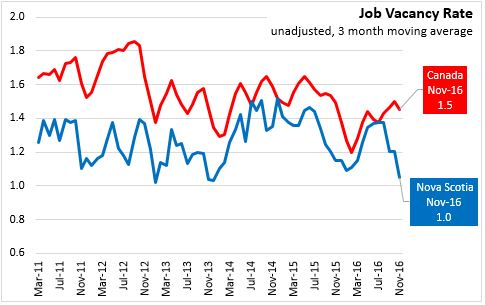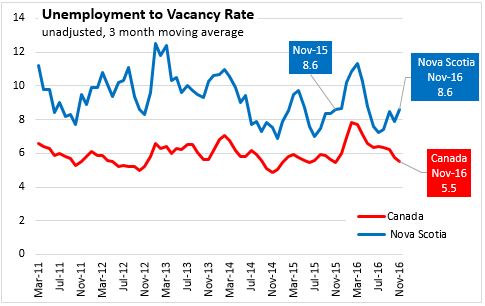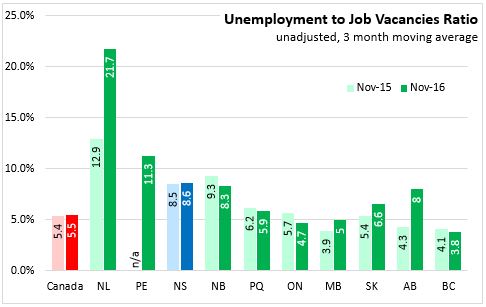For additional information relating to this article, please contact:
February 23, 2017JOB VACANCIES, NOVEMBER 2016 In the 3 months ending in November 2016, there were an average of 4,000 job vacancies in Nova Scotia (unadjusted for seasonality). The number of job vacancies has peaked in the summer of 2016 and the decline in the autumn data is similar to that observed in the same months of 2015.


Nova Scotia's job vacancy rate, the share of labour demand that is unfilled, was 1.0 per cent in November 2016. The job vacancy rate rose through the first six months 2016, signalling a tighter labour market in Nova Scotia. Since reaching the same level as the Canadian average, Nova Scotia's job vacancy rate has subsequently fallen. Although the data series is relatively new, this appears to be emerging as a seasonal pattern in the province's labour market; the job vacancy rate also dipped later in 2015.
Across Canada, Job vacancy rates are highest in British Columbia and lowest in Newfoundland and Labrador, with an average of 1.5 per cent.

There were an average of 8.6 unemployed persons per job vacancy in Nova Scotia in the 3 months ending in November.
The number of unemployed persons per job vacancy also signals slack or tightness in the labour market. After declining through early 2016, the ratio of unemployment-to-job-vacancy has crept up in recent months, sending signs of re-emerging slack in Nova Scotia's labour market. However, this may be a seasonal phenomenon as the ratio is similar to levels reported in November of 2015.

British Columbia currently reports the tightest labour market conditions in Canada, with a job vacancy rate of 1.8 per cent and just 3.8 unemployed persons for each job vacancy. There have been notable increases in labour market slack in Newfoundland and Labrador as well as Saskatchewan and Alberta, which had previously reported the tightest labour markets in the country.

Source: Statistics Canada's Job Vacancies. CANSIM 284-0001 and 284-0003
END